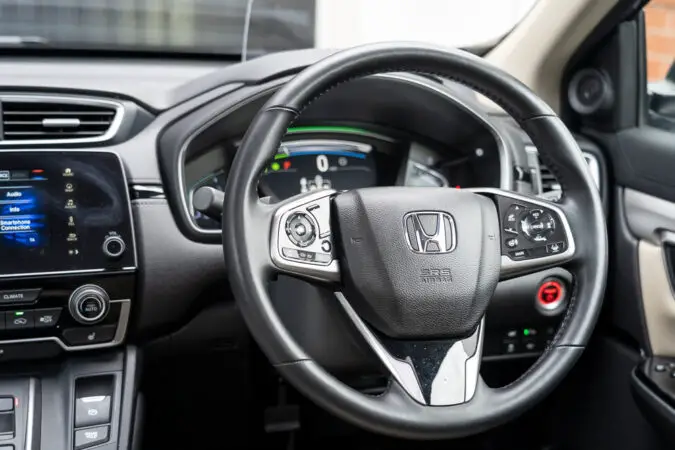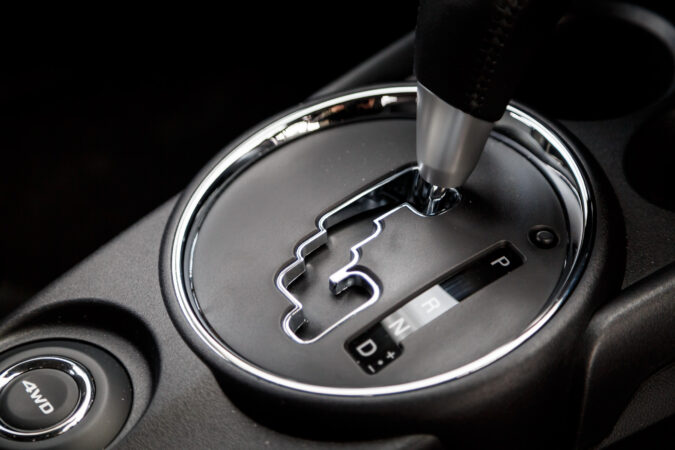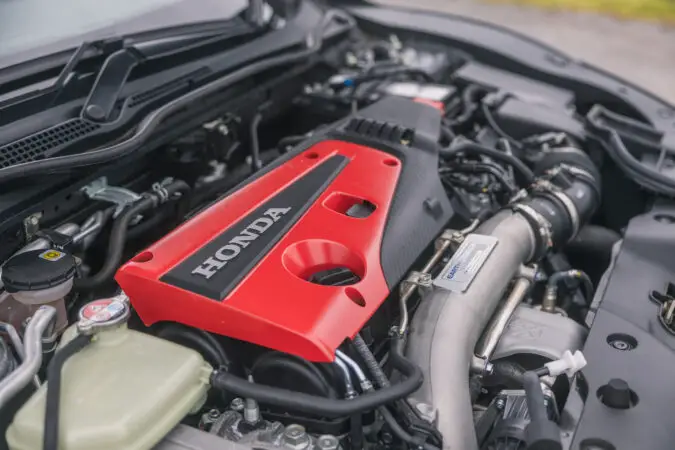It is safe to say that the Honda Element was a vehicle ahead of its time. With this SUV, Honda offered gearheads the opportunity of owning a vehicle that was fun, practical, and stylish in its own unique way. However, if you are in the market for one of these vehicles, you should have a good idea about the Honda Element years to avoid. This will help you to narrow your purchase decision down to only the best models.
Although the Element was discontinued more than a decade ago, the retro SUV has seen a surge in popularity in recent years. This is understandable because most car buyers in 2022 tend to purchase SUVs over sedans. As a result, the demand for older SUVs has gone up as well.
We know that you are eager to dive into the discussion about the worst years of the Honda Element. So, without waiting any longer, let’s get started, shall we?
Honda Element
Undoubtedly, the Honda Element is one of the most unique vehicles ever made by a Japanese manufacturer. Although there are some Honda Element years to avoid, this SUV is beloved by many gearheads around the world.
The Element first went on sale for the 2003 model year. It was one of the smallest SUVs of that era. In fact, it was an impressive eight inches shorter than a Honda Civic. Although it was small, the Element was a surprisingly roomy vehicle. It had enough interior space for four six-foot-tall adults to travel in comfort.
1. Styling
A unique styling cue of the Honda Element was its reverse-opening doors. Although not as luxurious as a Rolls-Royce, these unique doors allowed passengers and cargo to be easily loaded into the vehicle. Thanks to these doors, Honda did not have to fit a “B” pillar into the Element, which further added to its stylish appearance.
This SUV was mainly focused to be appealing to the younger generation. According to Honda, the styling of the Element was inspired by a beach lifeguard station. Additionally, the curved roofline was influenced by a surfboard. The unpainted plastic panels at the front and rear of the SUV made sure that the vehicle won’t get scratched when you traverse over rough terrain.
2. Performance
The Elements was by no means a performance vehicle. However, the 2.4-liter inline four under its hood made 156 horsepower, which was more than enough to power this spacious SUV. Later down the line, power was increased to 166 horsepower. Paired with these engines was either a 5-speed automatic or 5-speed manual transmission.
For a vehicle of its nature, the handling of the Element was better than expected. The comfortable yet firm ride was praised by many owners. This was made possible by the underlying CR-V platform. The acceleration of the car was equally impressive too.
When equipped with the 5-speed manual transmission, the Element could bolt to 60 mph in a mere 8.4 seconds. The gear shifter being mounted close to the hands of the driver only adds to the fun of driving this unique SUV.
3. Model Years
Honda offered the Element for sale starting from 2003 through to 2011. Initially, two trim levels named the DX and EX were offered. A third model that slotted between them debuted for the 2004 model year, which was called the LX.
Year by year, Honda updated these models with a slew of additional features. The options for a remote keyless entry system and side airbags were offered in 2005. Similarly, 2005 saw the introduction of features like satellite radio, MP3, and a passenger side armrest.
For those who didn’t like the unpainted panels of the regular Element, Honda offered a fully-painted version called the EX-P in 2006.
The Element received a mild cycle refresh the following year in 2007. This brought forth several new features, including a more powerful engine, standard stability control, side airbags, and a new automatic transmission.
A more sporty trim called the SC also made its debut with this refresh. Additionally, the relocation of the front seat belt mounts (fun fact, check out our guide on where to get seat belt repairs near me) helped rear passengers to exit the vehicle without the front passengers having to unbuckle their belts. The addition of silver slats onto the front grille was a major exterior difference that set the facelifted model apart from those that came before it.
Fuel efficiency is another key factor when it comes to determining Honda Element years to avoid. After all, who wants to buy a gas guzzler in this day and age? In the next chapter, we will take a look at the efficiency and gas consumption of the Element in more detail.
Honda Element MPG
Thanks in part to its smaller stature, the Honda Element is one of the more fuel-efficient SUVs you can purchase on the used market today. However, the fuel consumption may vary depending on the powertrain that is equipped with the vehicle. In other words, the smaller engine with 2WD will be more fuel efficient than the 4WD model.
Based on the data from owners, the Honda Element gets between 11.2 – 13.1 MPG in city driving. On the highway, these figures go up to 23 – 26 MPG. As we mentioned, these figures may slightly vary between trim level and model year. Overall, the combined gas mileage of the most recent 2011 Honda Element ranges from 21.5 MPG to 22.5 MPG.
Honda Element Years To Avoid
There is no rose without a thorn, and that remains the same when it comes to the Honda Element as well. Although most years of the Elements serve their owners well, there are some that should be avoided like that plague. When it comes to the number of reliability issues and user complaints, the worst Honda Element years are,
- 2003
- 2004
- 2006
- 2007
- 2008
Now, let’s take a deeper dive into the reasons why these are considered to be the worst Honda Element model years out of them all.
Honda Element Years To Avoid #1 – 2003
When it comes to new car launches, the first model year is often one of the worst ever. This was true in the case of the Honda Element as well. The 2003 model suffered from a whole host of issues, leading the model to be recalled 12 different times.
One of the main places of concern was the vehicle’s airbags. Not only did they come with the risk of exploding upon impact, but it was also discovered that they would launch metal fragments toward the occupants too.
Some other common issues with the 2003 Honda Element were related to the ignition system. The key of the vehicle wouldn’t go into the ignition, leaving drivers unable to start their vehicles. There was no cheap fix for this issue either, and the repair will often be in the range of $500. Sometimes, the ignition interlock would cause the SUVs to roll away.
The engine sputtering (to learn more, check out our overview of sputtering engine when accelerating) at idle would often cause the battery to die, and the odometer had a tendency to fail prematurely as well. On the other hand, reversing the vehicle was stressful due to the rearview mirror having too many blind spots. The combination of these issues justifies the ranking of 2003 as one of the main Honda Element years to avoid.
Honda Element Years To Avoid #2 – 2004
The model year that followed 2003 was not much better in terms of reliability either. The airbags still remained the main issue, while a malfunctioning seatbelt light added to the unsafe nature of the vehicle. These safety liabilities were enough to discard many people from choosing the Honda Element as their next vehicle.
The windshield of the 2004 Honda Element was prone to cracking out of the blue. Similarly, the seat cushions, as well as the odometer, all had their separate sets of issues. Overall, we recommend you stay away from the 2004 Honda Element to save both your time and money.
Honda Element Years To Avoid #3 – 2006
Compared to the previous years, the 2006 Element received minimal complaints. however, that is not to say that this year was reliable by any means. In 2006, the Element was plagued with paint issues. Additionally, there were complaints lodged about airbag problems, engine issues as well as various electrical gremlins too.
Honda Element Years To Avoid #4 – 2007
2007 was another year where the Element faced many major reliability issues. One of the major ones was related to the gauge cluster. The needles on the gauges would break, causing a bright light to enter the passenger compartment. This would distract the drivers, creating a risky driving condition in the process.
Honda Element Years To Avoid #5 – 2008
Premature brake wear problems affected many 2008 Honda Elements. As a result, owners had to get their brakes serviced more frequently. The paint Honda used in this model year was low in quality, which garnered many customer complaints.
As you can see, these few years of the element are affected by a variety of issues. If you get an Element from one of these years, you’ll have to spend thousands of dollars on repair bills alone. Keep this in mind while you are searching for your next Honda Element.
Honda Element Towing Capacity
Being an SUV, the Element can be used to tow a trailer. In fact, Honda offered an optional Class II tow hitch as a factory option with the Element too. Across all trim levels, the Honda Element has a towing capacity of 1500 lbs, which is an impressive figure for a vehicle of its size.
However, there are a number of factors that affect the towing capacity of the Honda Element. The number of passengers is one such figure. You should always take the number of passengers into consideration before towing, as it plays a part in the vehicle’s Gross Combined Vehicle Weight Rating (GCWR).
Honda Element Reliability
Honda is a manufacturer well known for making reliable vehicles. But, once in a while, even the best can make mistakes. The same is applicable to the Element too. Here are some of the most well-known Honda Element reliability issues.
- Excessive Oil Consumption
- Brake Problems
- Suspension Issues
- Faulty Ignition Switch
- Water Pump Issues
- Leaks In The Sunroof
- Transmission Problems
- Rough Idling Engine
- Faulty Door Locks
- Oil Leaks
1. Excessive Oil Consumption
Consuming excessive amounts of oil is a characteristic of Honda Elements across a range of model years. The main reason for this is an issue with the piston rings of the vehicle. When the piston rings wear out, they cannot properly seal the combustion chamber, which leads to oil seeping into it. This is what causes excessive oil consumption.
2. Brake Problems
The brakes are another common area of complaint for many Honda Element owners. The issue is most prominent in vehicles that are frequently driven in stop-and-go traffic conditions.
If you feel that the brakes of your vehicle are faulty, your best course of action is to take the vehicle to a mechanic. On most occasions, the brake issues are caused by faults in either the rotors or the brake pads of the vehicle.
3. Suspension Issues
Problems in the struts and shocks cause the suspension of the Honda Element to make squeaking noises when going over bumps. Vehicles made in 2004 and 2005 are more susceptible to this issue.
4. Faulty Ignition Switch
The ignition switch has been the source of headaches for many Honda Element owners. This part is responsible for powering the car’s engine. So, if it fails, the engine may end up stalling. In fact, Stalling is the main indication of this issue. If your vehicle falls victim to this problem, the best solution is to replace the faulty ignition switch with a new one.
5. Water Pump Issues
The water pump is an important component in a vehicle. It is responsible for coolant circulation, which is what cools the engine down from its high operating temperatures. Water pump failure is a major issue, as it causes the engine to overheat.
This can result in catastrophic damage, requiring thousands of dollars to fix properly. If you own a Honda Element made in 2005 or 2006, you should keep a watchful eye on this issue. If the temperature gauge of your SUV shows a higher reading than normal, we recommend you get the water pump checked by a professional.
6. Leaks In The Sunroof
Most Honda Element models came equipped with a sunroof. This allowed the passengers to get some fresh air, while simultaneously lighting up the cabin with sunlight. However, this sunroof came with a small caveat as well. You see, a faulty seal or a clogged drain could lead to your sunroof leaking water into the passenger compartment.
This can be a major nuisance if you live in an area prone to rain or snow. On most occasions, simply cleaning the drain would fix the issue. However, there may be times when you’ll have to replace the entire seal in order to prevent further leaks.
7. Transmission Problems
The transmission is another system where the Honda Element has some well-known issues. Most owners have got stranded on the side of the road because of transmission failure and had to get their vehicles towed in order to make it safely back home. Transmission issues are most prominent in Honda Elements made during the 2007 model year.
8. Rough Idling Engine
Rough idling is one of the earliest symptoms that indicate that something is wrong with your engine. On most occasions, the throttle body is the part to blame. The throttle body is what regulates the amount of air entering the engine. A dirty throttle body causes the engine to idle in a rough manner.
If the engine is idling roughly due to a dirty throttle body, fixing it is relatively easy (which you can do so by learning how to clean a throttle body). All you have to do is thoroughly clean it in order to get it back to perfect working order.
9. Faulty Door Locks
The 2003 Honda Element came with a faulty remote that would not work properly. As a result, the keys wouldn’t fit inside the locks or would get stuck. Some owners even had to take apart the entire door just to remove the jammed key.
10. Oil Leaks
Engine oil leaks are an issue that affects Honda Elements across all model years. Faulty oil pressure sensors and the gauge needle splitting from the body have been identified as two major causes of this problem.
Oil leaks are an issue that should be fixed as soon as possible. If not, it can lead to catastrophic consequences, including engine failure. Most probably, you would have to replace the oil pressure sensor with an aftermarket one to permanently get rid of engine oil leaks.
Cars Similar To The Honda Element
When it came out, the Honda Element was seen as a unique vehicle that appealed to a niche fanbase. However, this SUV started the revolution of off-road focused, funky SUVs. Since then, a number of major manufacturers have followed in the footsteps of Honda, and have created vehicles that are inspired by the Element.
Some popular cars that are similar to the Honda Element both in looks and in function are,
1. Jeep Renegade
It only takes one glance to see the similarities between the Honda Element and the Jeep Renegade. Both have a spacious yet boxy design and were designed with off-roading in mind.
Speaking of off-roading, the Renegade even comes in an optional Trailhawk trim level that makes it even more rugged. The 2.4-liter four-cylinder engine under the hood produces 180 horsepower which is more than enough for rock crawling. Additionally, this powerful engine gives the Renegade an impressive towing capacity of 2000 lbs.
2. Kia Soul
The next entry on our list comes our way from South Korea. Although it is bigger than the Element, the resemblance between the two models is uncanny. Not only that, the reliability and affordability of the Soul are on par with the Honda Element as well.
Much like the Element, the Kia Soul is equipped with ABS brakes and a power rack and pinion steering system. The interior of this subcompact has plenty of space, and the 24.2 inches of cargo room acts as an added bonus.
3. Land Rover Defender
The new and improved Land Rover Defender is reminiscent of the Honda Element thanks to its boxy appearance. However, this is a much more off-road-focused vehicle than the element. There are two versions on sale, in the form of the two-door Defender 90 and the four-door Defender 110.
Inside, there is enough seating capacity for five passengers. But, if you need to carry even more passengers, the Defender could be equipped with a jump seat in the front row. This option increases the passenger capacity up to six people.
Verdict
Although the Honda Element is considered by many to be an excellent SUV, it has had its fair share of unreliable model years. 2003, 2004, 2006, 2007 and 2008 stand at the top of this list.
There are some common reliability problems associated with this quirky SUV as well. Over the years, many users have been plagued with issues like excessive oil consumption, rough idling, and leaks in the sunroof.
Despite all, the Honda Element has garnered a cult following in recent years. The distinctive style paired with the capability it offered at the time of its launch are contributing factors to this popularity. If you are in the market for a Honda Element, make sure to do your research before making a purchase decision.
FAQs On Honda Element Years To Avoid
Are Hondas Reliable
For many decades, Honda has been the manufacturer of some of the most reliable vehicles on our roads. Models like the Accord, Civic, CR-V, and Element are beloved all across the world thanks to their durable nature.
Are Hondas Good Cars
Honda makes well-engineered vehicles that are known to last for many years. On average, a Honda will serve you reliably for around 15 – 20 years.
Is Honda Bringing Back The Element
Honda discontinued the Element after the 2011 model year. There is a possibility that the Japanese marque will bring back this popular SUV for the 2023 model year.
Why Was The Honda Element Discontinued
Dwindling sales were the main reason behind Honda canceling the Element. By 2011, the vehicle had become too expensive, which drove customers away from it.
Are Honda Elements Good Cars
The Honda Element is a reliable, affordable, and capable SUV. Its rearward-opening doors further added to its practicality.







1 comment
The worst model year for the Honda Element is the 2006 model year.